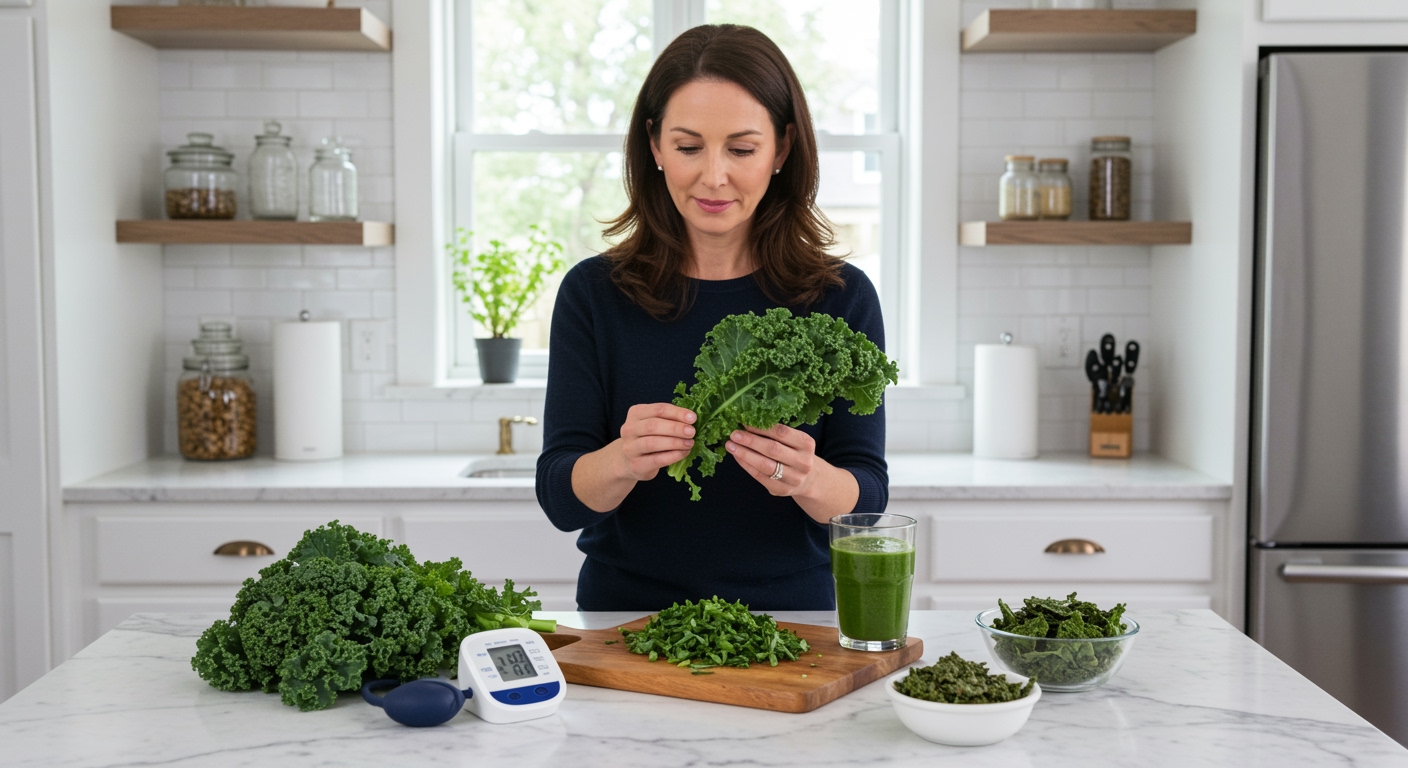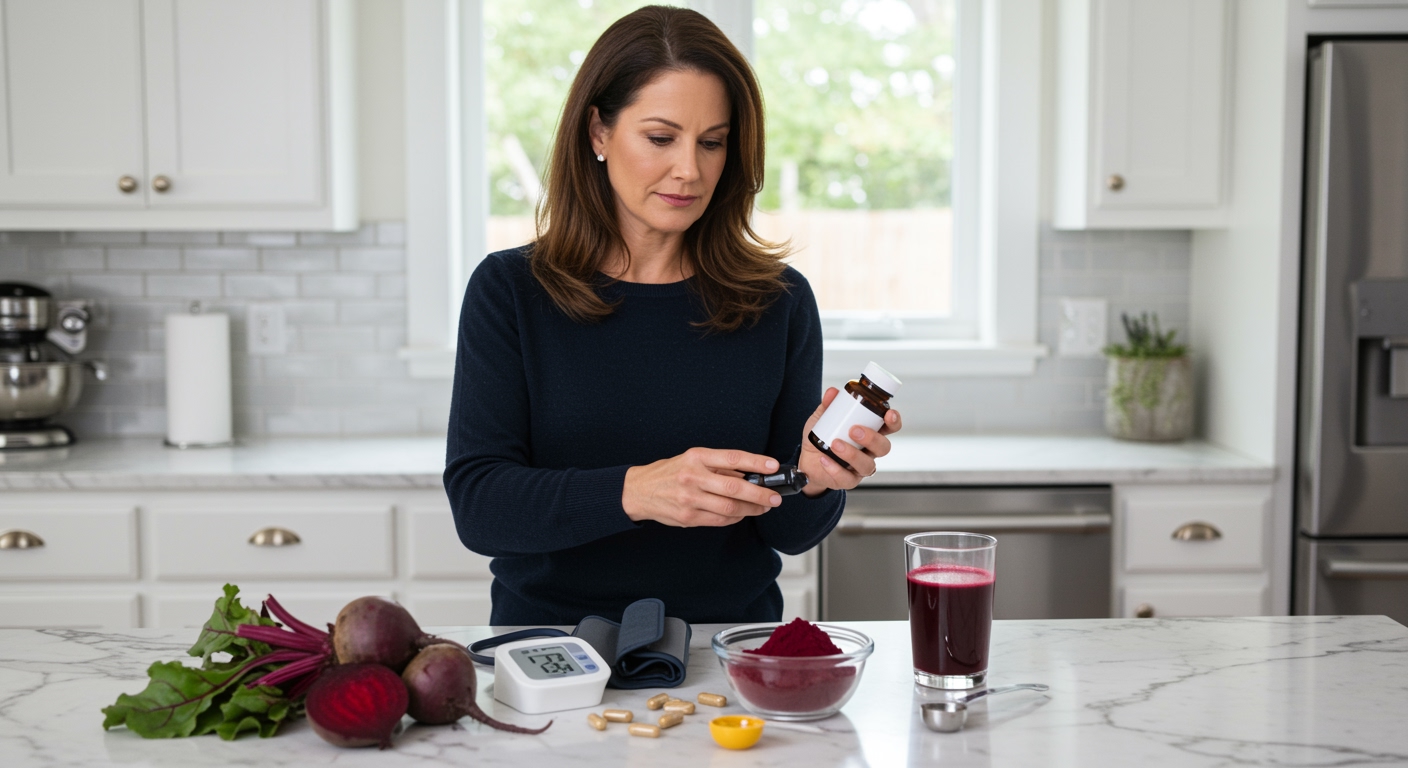✪ Key Takeaway: Kale contains potassium, nitrates, and antioxidants that can help lower blood pressure when eaten regularly as part of a balanced diet.
Introduction
Your doctor just told you that your blood pressure is too high, and now you are wondering if eating more kale could actually help.
You have probably heard people talking about kale as a superfood, but you want to know if there is real science behind these claims, especially when it comes to managing hypertension.
Hi, I am Abdur, your nutrition coach, and today I am going to explain exactly how kale affects your blood pressure and whether it can make a meaningful difference in your cardiovascular health.
What Makes Kale Special for Blood Pressure?
Kale stands out from other vegetables because it contains an impressive combination of nutrients that directly impact your cardiovascular system.
The most important component for blood pressure management is potassium, which helps your kidneys remove excess sodium from your body.
One cup of raw kale provides about 329 milligrams of potassium, which is roughly 7% of your daily needs.
Kale also contains nitrates, which your body converts into nitric oxide, a compound that helps relax and widen your blood vessels.
The antioxidants in kale, particularly vitamin C and beta-carotene, protect your blood vessels from damage caused by free radicals.
These nutrients work together to create a powerful effect on your cardiovascular system that goes beyond what you might get from taking individual supplements.
✪ Fact: Kale contains more potassium per calorie than bananas, making it an excellent choice for blood pressure management.
How Does Kale Actually Lower Blood Pressure?
The mechanism behind kale’s blood pressure benefits involves several biological processes that work simultaneously in your body.
When you eat kale, the high potassium content helps your kidneys excrete more sodium through your urine, which reduces the amount of fluid your body retains.
Less fluid retention means less pressure on your blood vessel walls, which directly translates to lower blood pressure readings.
The nitrates in kale get converted by bacteria in your mouth and stomach into nitric oxide, a powerful vasodilator that causes your blood vessels to relax and expand.
This vasodilation effect can begin within hours of eating nitrate-rich foods like kale and can last for several hours.
The antioxidants in kale also help maintain the health of your endothelium, which is the inner lining of your blood vessels that plays a crucial role in blood pressure regulation.
✪ Pro Tip: Chew kale thoroughly to maximize nitrate conversion by the beneficial bacteria in your mouth.
What Does the Research Say About Kale and Hypertension?
Scientific studies have shown that increasing your intake of leafy greens like kale can lead to measurable improvements in blood pressure.
Research published in cardiovascular journals demonstrates that people who eat more potassium-rich vegetables have significantly lower rates of hypertension and cardiovascular disease.
Studies specifically examining nitrate-rich vegetables show that regular consumption can reduce systolic blood pressure by 3-5 mmHg and diastolic pressure by 2-3 mmHg.
While these numbers might seem small, they represent a clinically significant reduction that can lower your risk of heart attack and stroke.
The research also shows that the blood pressure benefits are most pronounced when kale is consumed as part of an overall healthy diet pattern rather than as an isolated intervention.
Long-term studies indicate that people who consistently eat leafy greens like kale have better cardiovascular outcomes and lower medication requirements for blood pressure management.
✪ Note: The blood pressure benefits of kale are cumulative and become more pronounced with consistent, long-term consumption.
How Much Kale Should You Eat for Blood Pressure Benefits?
The optimal amount of kale for blood pressure management depends on your individual needs, but research suggests that consistency matters more than quantity.
Most studies showing cardiovascular benefits used amounts equivalent to 1-2 cups of raw kale or half a cup of cooked kale per day.
You can achieve these benefits by incorporating kale into your meals in various ways, such as adding it to smoothies, salads, soups, or stir-fries.
The key is to eat kale regularly rather than consuming large amounts sporadically, as the blood pressure benefits are dose-dependent and temporary.
If you are taking blood pressure medication, you should monitor your readings closely when increasing your kale intake, as the combined effect might require medication adjustments.
Remember that kale works best as part of a comprehensive approach that includes reducing sodium intake, maintaining a healthy weight, and staying physically active.
✪ Pro Tip: Start with small amounts of kale and gradually increase to avoid digestive discomfort while maximizing blood pressure benefits.
Are There Any Risks or Considerations?
While kale is generally safe for most people, there are some important considerations to keep in mind when using it for blood pressure management.
Kale contains compounds called goitrogens, which can interfere with thyroid function if consumed in very large amounts, especially if you have an existing thyroid condition.
People taking blood-thinning medications should be cautious about dramatically increasing their kale intake due to its high vitamin K content, which affects blood clotting.
If you have kidney disease, you should consult your doctor before significantly increasing your potassium intake from kale, as your kidneys might not be able to handle the extra potassium load.
Some people experience digestive discomfort when they suddenly increase their intake of fibrous vegetables like kale, so it is best to start slowly and gradually increase your consumption.
The most important thing to remember is that kale should complement, not replace, other proven blood pressure management strategies like medication compliance and lifestyle modifications.
✪ Note: Always consult your healthcare provider before making significant dietary changes if you have existing health conditions or take medications.
The Bottom Line
Kale can indeed make a meaningful difference in blood pressure management when consumed regularly as part of a balanced diet and healthy lifestyle.
Real health improvements come from consistent small changes, not dramatic overnight transformations.
I would love to hear about your experience with kale and blood pressure management, so please share your thoughts, questions, or results in the comments section below.
References
At NutritionCrown, we use quality and credible sources to ensure our content is accurate and trustworthy. Below are the sources referenced in creating this article:
- Harvard Health: Broccoli beats potatoes for lowering blood pressure
- PubMed: Dietary nitrate and blood pressure
- PMC: Potassium and cardiovascular health
- Open Access Pub: Hypertension and nutrition





